This post may contain affiliate links, please read our disclosure policy.
Want to learn more about Merlot wine? Discover the history, the taste, the smell and the geography of Merlot wine in this Introduction to Merlot.
There’s nothing quite like the perfect glass of red wine when enjoying a delicious meal or the sunset at the end of a long day. Though red wines range from the lightest red-pink Pinot to the darkest, inkiest Malbec, Merlot falls comfortably and enjoyably in between. Known for being food-friendly, versatile and simply tasty, Merlot is a great wine to get to know.
Whether or not you agree with the stinging vitriol directed at the Merlot grape in the 2004 film “Sideways,” there’s no denying the varietal’s popularity. Light on tannins and distinctly fruit-forward, the wine that the Merlot grape produces is drinkable and easy-to-pair.
In the past few decades, Merlot has exploded in popularity for its softer, more subtle flavor. In California alone, plantings of the grape have risen from 4,000 acres in 1988 to an incredible 50,000 acres in 2021. Much of this is due to the grape’s early maturity, versatility and easy adaptability.
There are two varieties of grape that are grown the most in the Bordeaux region of France – Merlot, which has been traced back to the late 18th century, and Cabernet Sauvignon. Merlot grapes are used to produce Merlot wine and are also blended with Cabernet Sauvignon. Merlot grapes are also grown extensively in California, South America, Italy and Australia.
The Merlot grape has a thin skin, which has both advantages and disadvantages. On the plus side, it means it will ripen a full week before other varieties. On the negative side, it means it is a less hardy grape and is susceptible to rot and mildew. As a matter of fact, several times entire harvests have been wiped out by either one and the French even banned any new crops from being planted.
Merlot grapes do the best in a warmer climate, but they are able to survive in cool weather as well. It is the ability of the Merlot grape to adapt to a cooler climate that has made it the most grown red variety in Washington State. Other colder areas that produce excellent Merlots are Long Island, the Shenanodah Valley and Oregon’s Rogue Valley.
The flavor of Merlot is similar to Cabernet Sauvignon, but Merlot grapes have a higher sugar content so it is softer to the pallet and a bit fruitier. When blended with Cabernet Sauvignon, the Merlot makes the wine softer, while the Cabernet Sauvignon gives the wine more body.
Merlot that comes from warmer climates like California compliments dishes with strong meats such as beef , lamb, a hearty pasta with a red sauce and a heavy chicken meal. Merlot is considered to be a medium bodied wine and can overcome the flavor of a lighter cuisine. Merlot that comes from colder climates is more acidic, more like a Pinot Noir than a Cabernet. Those wines pair best with fish and shell fish. When it comes to a Merlot wine and cheese pairings, stay away from strong cheeses such as those in the blue cheese family. Merlot also does not do well with spicy foods. They make the wine taste more on the bitter side. Merlot is also light enough to be served without food. It’s best, like with all red wines, to serve Merlot at 64 degrees F.
Another factor that will influence the taste of a Merlot is how long it has been aged. A young vintage will have a very fruity, cherry taste. A more aged product is less fruity with a hint of chocolate and licorice.
The next time you look at a good Bordeaux wine, give the label a good look. Chances are there will be a bit of Merlot blended in.
Merlot Wine Characteristics
Color
Merlot starts as a thin-skinned black grape. Once it is juiced, its color can range from a dark red with blue hues showing through, to a dark purple with black appearances similar to the grape’s original skin color. To show off this attractive, mysterious color, wine makers often put Merlot in tall bottles with big, curvy shoulders.
Subtlety
Merlot is lighter than its cousin, Cabernet Sauvingnon, allowing other flavors to be much easier for the taster’s tongue to detect. Merlot wines are often infused with flavors like tea, berry, black cherry, rosemary, thyme and even chocolate. The low acidity allows the flavors to hold up throughout the aging process, but the high alcohol lends the Merlot a medium body. Merlot has a smooth finish, though the flavor is less distinctive than the Sauvingnon.
Aroma
Your nose is likely to detect the fruit and herb flavors infused in the Merlot you’ve selected, while other red varieties, such as the Sauvingnon, are likely to overpower them. Sweet smells like vanilla, coconut, caramel or even oak will emanate from the wine depending on the variety. You will also find notes of blueberry, cherry, spice and smokiness.
Maturity
Merlot matures faster than other red wines because it is lower in tannins, which are the chemicals that cause wine to grow bitter with age. Therefore, it takes a shorter amount of time for Merlot to reach its ideal flavor. Wine makers can then sell Merlot at a cheaper price point, intended to be drunk within a year of bottling
Taste
Similar to its “nose,” Merlot’s taste profile often includes deep, fruity flavors, especially berry, as well as spiciness and qualities from oak-aging like smokiness or a slight vanilla flavor. Merlot is usually dry (not sweet). Merlot is generally characterized by flavors of green olive, cedar, currant, black pepper, mint, tobacco and tea leaf. Some of the more fruity varieties have hints of raspberry, blackberry, plum and cherry.
Body
Though Merlot can be light, medium, or full-bodied, it is usually a medium-bodied wine, meaning that it is not very light or very heavy.
Suggested Food Pairings
Merlot is an excellent match for pork or red meats, especially those that are roasted or grilled. It also pairs well with lightly flavored foods like pastas and salads as well as poultry and pork. And for your charcuterie board…Merlot pairs well with hard cheeses such as aged Gouda or sharp cheddar.
Region
Merlot grapes are grown heavily in Bordeaux, France and in California’s Napa Valley. While preferring a warm climate, they are quite adaptable to cold.
Use
Merlot grapes are primarily used to make lone standing Merlot wine. However, because of its softness and fruitiness, it is also found in many blended wines.
Types
There are three main types of Merlot. The first is light and fruity and is usually made entirely from Merlot grapes, though these are sometimes mixed with Pinot grapes. The second type has a stronger tannin structure with an even fruitier flavor, which usually comes from a light pairing with Cabernet Sauvignon. The final type of Merlot is full-bodied and strong, coming from a mix of Merlot and Cabernet that is strong on the Cabernet. There is also a white Merlot variety that is made when fermentation occurs after the grape juice has only a quick contact with the skin of Merlot grapes. This gives the wine a pink color.
Bonuses
Merlot ripens earlier in the season than its cousin, Cabernet Sauvignon, so it can be proposed earlier. It is softer and fruitier than the Cabernet, yet produces many of the same aromas and textures. This sometimes makes it more desirable to wine drinkers.
Detriments
This grape is very thin skinned and less hardy, which causes it to be susceptible to shatter (loss of fruit on the vine). The wine has been known to be over produced and often bottles will taste watered down. It also lacks age-ability, meaning that over time, the wine tends to get worse instead of better.
History of Merlot
Merlot’s roots are traceable to first-century France. It took many years for Merlot to reach its modern positioning as a venerable Bordeaux varietal (until the 1800’s, to be more precise). Over the course of years, Merlot has been developed under many names: Petit Merle, Vitraille, Crabutet Noir and Bigney. At that point, the varietal diverged from another grape, Cabernet Franc.
Interestingly, there has been a flurry of controversy in Chile involving yards of Carmenère being mislabeled as Merlot. The wine gradually began to spread throughout Europe and was widely produced up until the mid-1950s. In 1956, a major frost killed off much of the Merlot grape crop that was to be used for wine, and many of the vintage Merlot wines were lost in the 1960s to rot. This stopped Merlot production from 1970 to 1975. In the early 1990s, Merlot saw a rise in popularity as the health benefits of red wine made more people indulge in it.
Merlot wine is a red wine made from the Merlot grape, which is native to France’s Bordeaux region. The wine regions of France, California, Washington, Oregon, Chile and Australia are well-known for Merlot.
Geography of Merlot
Merlot adapts more readily to cooler climates and drier terrain than its sister grape, Cabernet Sauvignon, but generally prefers a warmer growing environment. It’s the most commonly planted grape in France’s Bordeaux region. Other top world producers of the grape include South Africa, Australia and New Zealand, as well as South American appellations in Chile and Argentina. American producers (outside of Napa and Sonoma, of course) include Washington State, Virginia and New York State’s Long Island.
France
Because of its hardy nature, Merlot is a popular plantation, however it is often used in blends for Cabernet Sauvignon and Cabernet Franc, as well as being the main grape in St. Emilion, chateau Palmer and pomerol. Despite being widely available, Merlot is regarded as an inferior table wine in France.
California
Initially grown in California to serve as a blend for the richer Cabernet Sauvignon, Merlot began to take off in its own right in the 1980s, serving as a crossover wine for those who traditionally preferred to drink white wine. Since then, producers have caught on to the idea of planting Merlot grapes with varying degrees of success, the vines seem to produce the best results when grown on hillsides.
Italy
Producers have been growing merlot in Italy since the late 19th Century, particularly in the Trentino and Tuscan areas and on hillside areas. The climate in these regions is perfect for Merlot as it can withstand both the heat of the summer and cold winter months. Italian Merlots tend to have a small percentage of another grape too, such as corvino, usually around 95 percent Merlot and 5 percent corvino.
Chile
Chilean vineyards first became populated with Merlot in the 19th Century, however like their California counterparts, they did not become popular until almost 100 years later. A previous plantation that had been forgotten about led to an unusually peppery flavor in the Chilean variety until the grapes were separated. Chilean merlot is commonly found in supermarkets around the world.
Merlot Wine Fun Fact
Merlot is, by and large, a relatively inexpensive wine, a fact that has greatly contributed to its popularity. Of course, there’s always an exception to every rule– and Merlot is a doozy. A 1990 bottling of Merlot from the world’s most famous producer of the varietal, France’s Chateau Petrus, costs a whopping $1,700 USD for one 750 ml bottle.
Have you hard Merlot? What is one of your favorite wineries? I personally love Charles Krug Limited Release Merlot.
Be sure to check out Food Wine Sunshine on Facebook, Twitter, Pinterest, and Instagram for more wine tips, cocktails, healthy recipes, and fun travel tips.



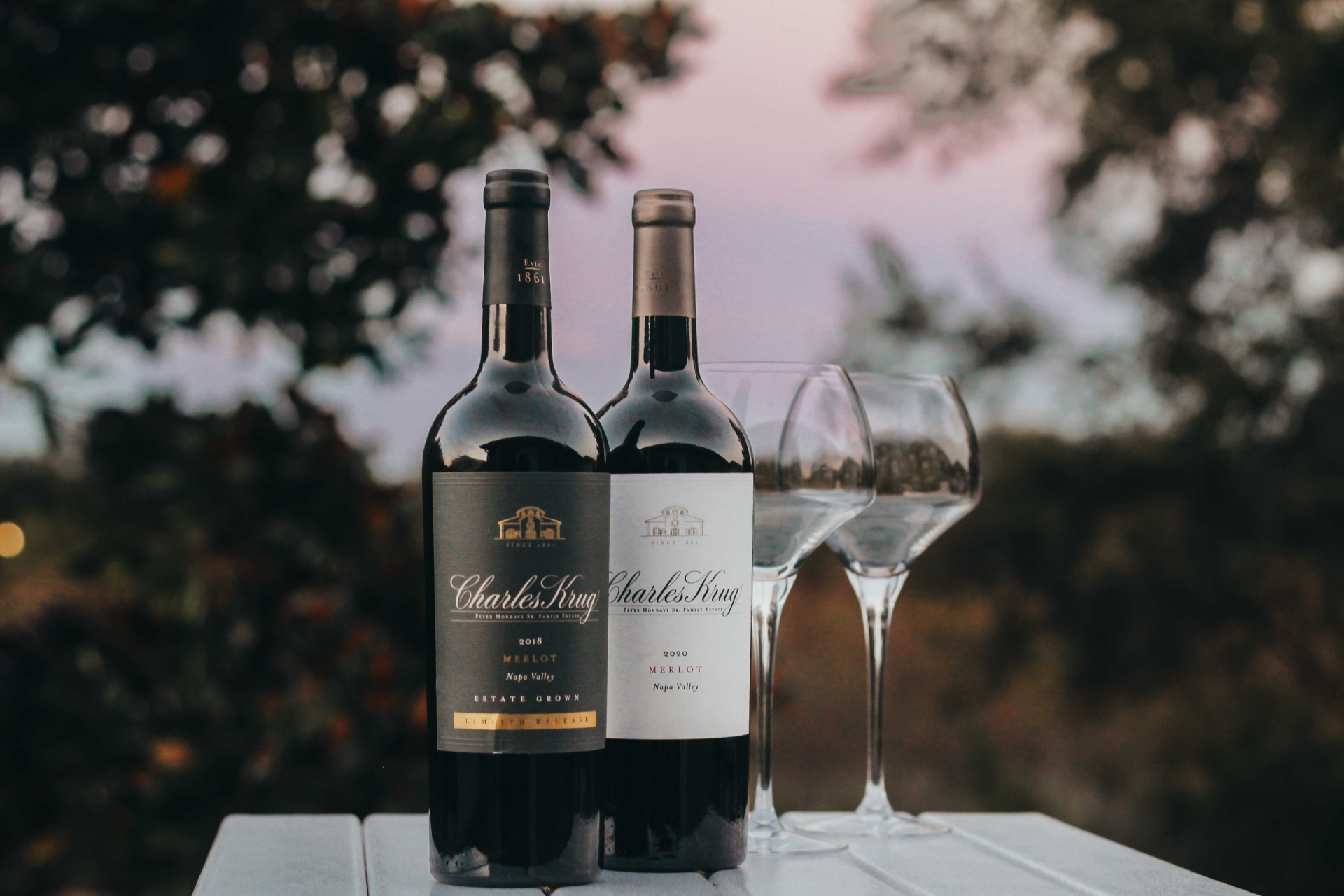

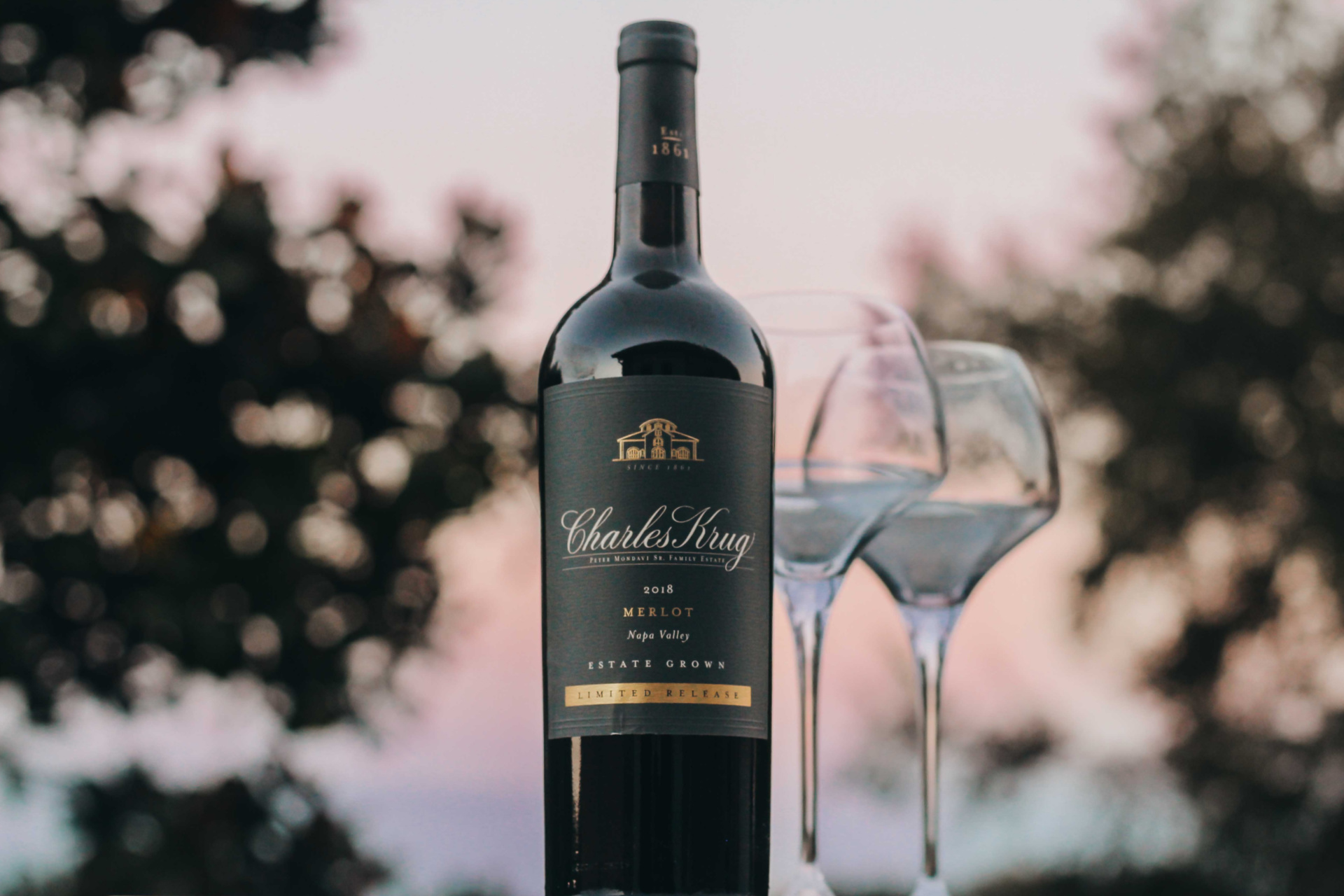

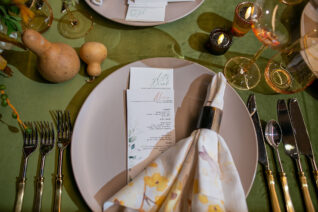
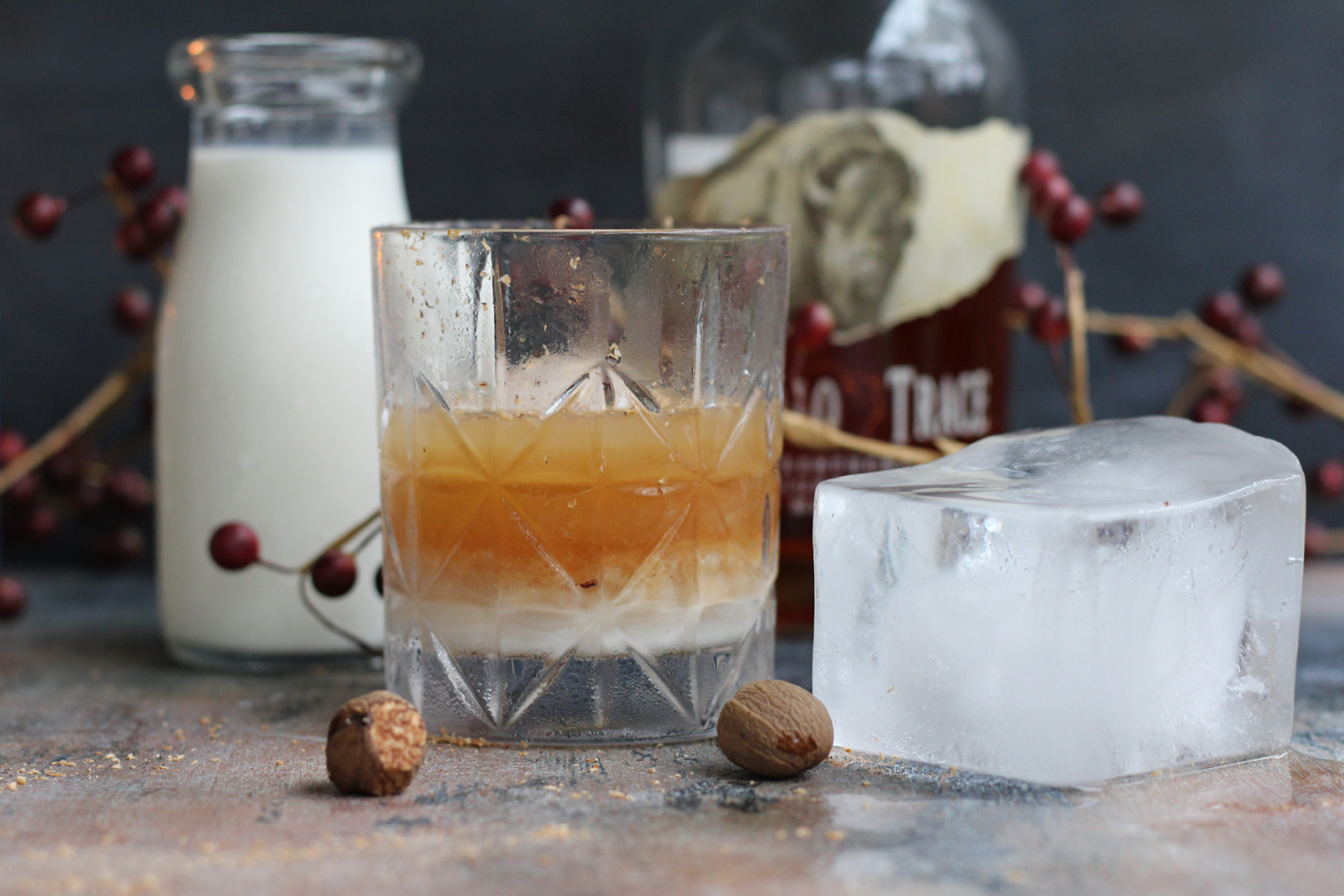
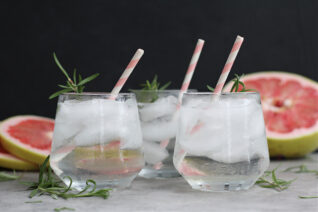

Comment section